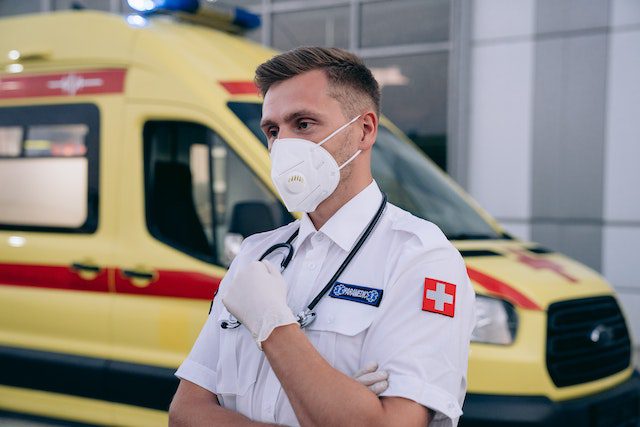EMR training is an essential component of preparing healthcare professionals to effectively respond to emergency situations. With the rising number of medical emergencies and natural disasters, it is crucial for individuals in the medical field to have a solid foundation in emergency response. EMR training equips healthcare providers with the knowledge and skills necessary to assess patients, perform life-saving maneuvers, and provide immediate care until more advanced medical personnel arrive.
One of the key reasons why EMR training is important lies in its ability to improve patient outcomes. In emergency situations, every second counts, and having trained professionals who can quickly assess a patient’s condition and initiate appropriate treatment can often mean the difference between life and death. EMRs are trained to handle a wide range of emergencies, from cardiac arrests to trauma incidents, ensuring that patients receive timely attention that could potentially save their lives.
Moreover, EMR training also plays a crucial role in enhancing communication and teamwork among healthcare professionals during emergencies. Through their training programs, EMRs learn how to effectively communicate with other members of the emergency response team, such as paramedics or nurses. They also gain valuable experience working together under pressure, understanding each individual’s role in providing optimal care for patients. This level of coordination can significantly improve efficiency during emergencies and contribute to better overall outcomes.
Option 1: National Registry of Emergency Medical Technicians (NREMT)
The National Registry of Emergency Medical Technicians (NREMT) is a crucial institution in the field of emergency medical response. As the nation’s certifying agency for emergency medical technicians (EMTs), the NREMT plays a vital role in ensuring that qualified individuals are prepared to respond effectively to emergencies and provide essential care. With its comprehensive certification process, which includes both cognitive and psychomotor exams, the NREMT ensures that EMTs possess the knowledge and skills necessary to save lives.
One unique aspect of the NREMT is its continuous professional development requirement. In order to maintain their certification, EMTs must complete ongoing continuing education courses and recertification exams every two years. This commitment to lifelong learning helps ensure that EMTs stay up-to-date with advancements in emergency medical care, allowing them to provide the highest level of care throughout their careers.
As a national registry, the NREMT provides a standardized level of competency across all states. This allows for greater mobility and flexibility for certified EMTs who may want to work in different locations or during large-scale emergencies where resources are often shared among multiple jurisdictions. By establishing a consistent standard of excellence in training and certification, the NREMT contributes significantly to overall public safety by promoting quality emergency medical care nationwide.
Option 2: American Red Cross EMR Course
The American Red Cross EMR course is a top choice for individuals looking to become certified emergency medical responders. With a reputation for providing comprehensive training, the American Red Cross equips students with the necessary knowledge and skills to effectively respond to various medical emergencies. A unique aspect of their curriculum is the focus on hands-on experience, allowing students to practice real-life scenarios in a controlled setting. This practical approach not only enhances learning but also instills confidence in students as they gain firsthand experience in handling emergency situations.
One of the standout features of the American Red Cross EMR course is its emphasis on teamwork and communication. The curriculum includes interactive exercises that simulate real-life emergencies, requiring students to work together as a cohesive unit. These collaborative exercises help develop effective communication skills among team members and promote coordination during high-stress situations. By emphasizing these aspects, the Red Cross ensures that their graduates are well-prepared to function cohesively as part of an emergency response team.
Participants in the American Red Cross EMR course have access to extensive resources and support systems throughout their training journey. The organization provides online modules, study guides, and additional materials that supplement classroom instruction. Moreover, ongoing guidance from experienced instructors ensures that students receive personalized attention and assistance whenever needed. This level of support not only facilitates learning but also fosters an environment where individuals can ask questions, seek clarification, and continuously improve their knowledge base.
Option 3: American Heart Association First Responder Course
The American Heart Association First Responder Course is a comprehensive training program that equips individuals with the knowledge and skills necessary to respond effectively in emergency situations. What sets this course apart from others is its emphasis on not only providing medical assistance but also prioritizing the well-being of the individual experiencing the emergency. By combining medical expertise with compassion and empathy, first responders trained through this program are able to provide both physical and emotional support during critical moments.
One unique aspect of the American Heart Association First Responder Course is its focus on leadership development. Recognizing that effective emergency response requires a strong leader at the helm, this course provides participants with valuable leadership skills such as decision-making, communication, and problem-solving. These skills are essential in high-stress situations where quick thinking and decisive action can make all the difference.
Another noteworthy feature of this course is its integration of hands-on training scenarios. Participants have the opportunity to engage in realistic simulations that mimic real-life emergencies, allowing them to apply their newfound knowledge and skills in a controlled environment. This practical experience enhances their confidence and ability to handle emergencies confidently when they occur in real life.
Comparison: Pros and cons of each curriculum option
When it comes to choosing an Emergency Medical Responder (EMR) curriculum, there are several options available, each with its own set of pros and cons. One popular option is the traditional classroom-based curriculum, which provides students with hands-on experience and direct interaction with instructors. This type of curriculum allows for immediate feedback and clarification of concepts, which can be invaluable for hands-on skills training. However, one downside is that it may not be as flexible as other options, as it requires attending scheduled classes on a regular basis.
Another choice to consider is online learning platforms or modules. These offer convenience and flexibility, allowing students to complete coursework at their own pace and from anywhere with an internet connection. Additionally, online materials often include multimedia components such as videos and interactive quizzes that can enhance the learning experience. However, without face-to-face instruction or instructor feedback in real-time, some students might find it challenging to fully grasp certain practical aspects of emergency medical response.
A hybrid approach combines both classroom-based learning and online coursework for a well-rounded educational experience. This option offers the flexibility of completing some parts of the curriculum online while still providing opportunities for direct interaction and hands-on practice in a classroom setting. Despite its advantages in terms of accessibility and convenience, this approach can still require a significant time commitment due to the combination of self-paced online modules and scheduled class sessions.





























